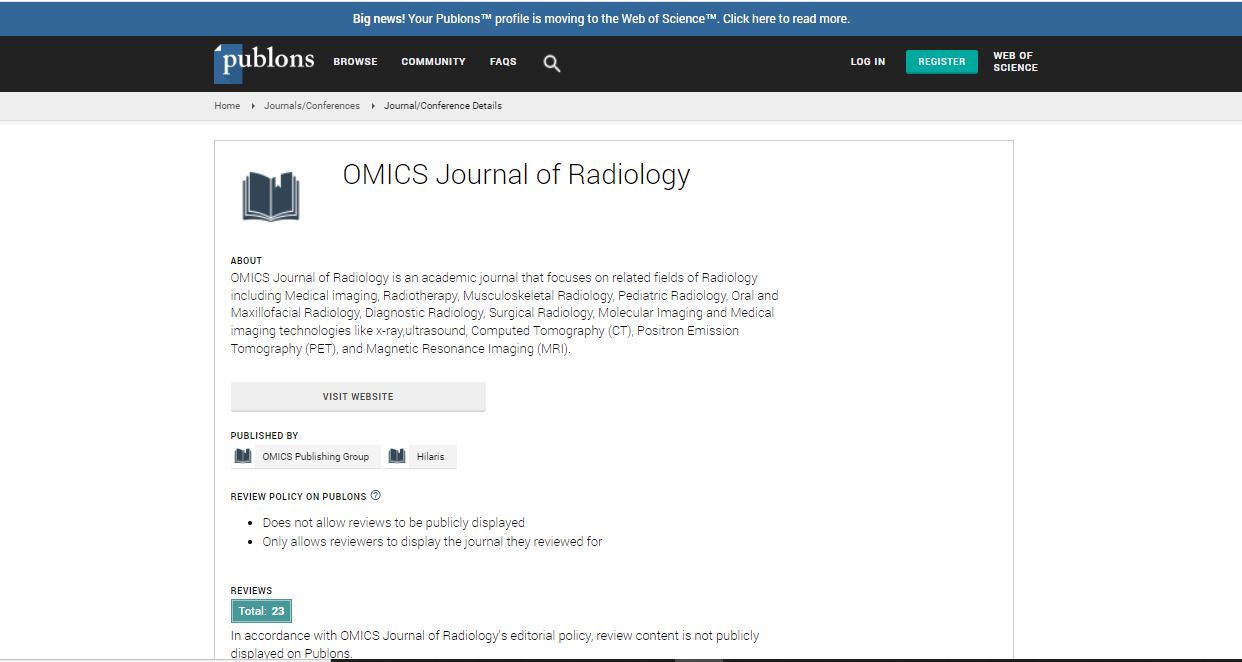Our Group organises 3000+ Global Conferenceseries Events every year across USA, Europe & Asia with support from 1000 more scientific Societies and Publishes 700+ Open Access Journals which contains over 50000 eminent personalities, reputed scientists as editorial board members.
Open Access Journals gaining more Readers and Citations
700 Journals and 15,000,000 Readers Each Journal is getting 25,000+ Readers
Google Scholar citation report
Citations : 551
Journal of Radiology received 551 citations as per Google Scholar report
Journal of Radiology peer review process verified at publons
Indexed In
- Index Copernicus
- Google Scholar
- Open J Gate
- Genamics JournalSeek
- ResearchBible
- Electronic Journals Library
- RefSeek
- Hamdard University
- EBSCO A-Z
- OCLC- WorldCat
- SWB online catalog
- Virtual Library of Biology (vifabio)
- Publons
- Geneva Foundation for Medical Education and Research
- ICMJE
Useful Links
Share This Page
The role of nuclear medicine in early breast cancer diagnosis - ″How do we do?″
International Conference on Medical Imaging & Diagnosis
Bital Savir-Baruch
Loyola University Medical Center, USA
ScientificTracks Abstracts: OMICS J Radiol
Abstract
Breast cancer is the most common diagnosed cancer worldwide. Since the introduction of mammography as gold standard for screening purposes in the diagnosis of breast cancer, mortality decreased significantly. However, its performance in a population with dense breast is very low. Among all screening women, approximately 48% women will present with heterogeneously or extremely dense breast. Low performance of mammography is likely due to overlying glandular tissue masking tumor lesions. Hence, other modalities such as molecular breast imaging are been evaluated. Tc99m Sestamibi Molecular Breast Imaging (MBI) has demonstrated significantly higher sensitivity and equivalent specificity in the detection of breast cancer among high risk women when compared to mammography and is thus being used increasingly as an adjunct to mammography and ultrasound in selected women. Large trial by Rhodes et. al. evaluated the performance of MBI using as low as 8 mCi of Tc99m Sestamibi in the screening of high risk women with mammographically dense breasts. MBI sensitivity was significantly higher than that of mammography, 81% versus 24%, with same specificity of 93% vs. 89%. However, when compared to mammography, nuclear medicine breast modality generates all body radiation dose. When targeting a younger population with increased probability of having dense breast, appropriate risk to benefit ratio has to be established. In this presentation, we will review the role of nuclear medicine in the diagnosis of early breast cancer.Biography
Bital Savir-Baruch is a board certified Nuclear Medicine Physician. She received her Medical degree from Semmelweis University, Budapest, Hungary. She completed the Nuclear Medicine residency program at Emory university Hospital, Atlanta, GA, In 2014, she joined Loyola University Medical Center, Maywood, Illinois as an Assistant Professor of Radiology.
Email: bital.savir-baruch@lumc.edu

 Spanish
Spanish  Chinese
Chinese  Russian
Russian  German
German  French
French  Japanese
Japanese  Portuguese
Portuguese  Hindi
Hindi 
